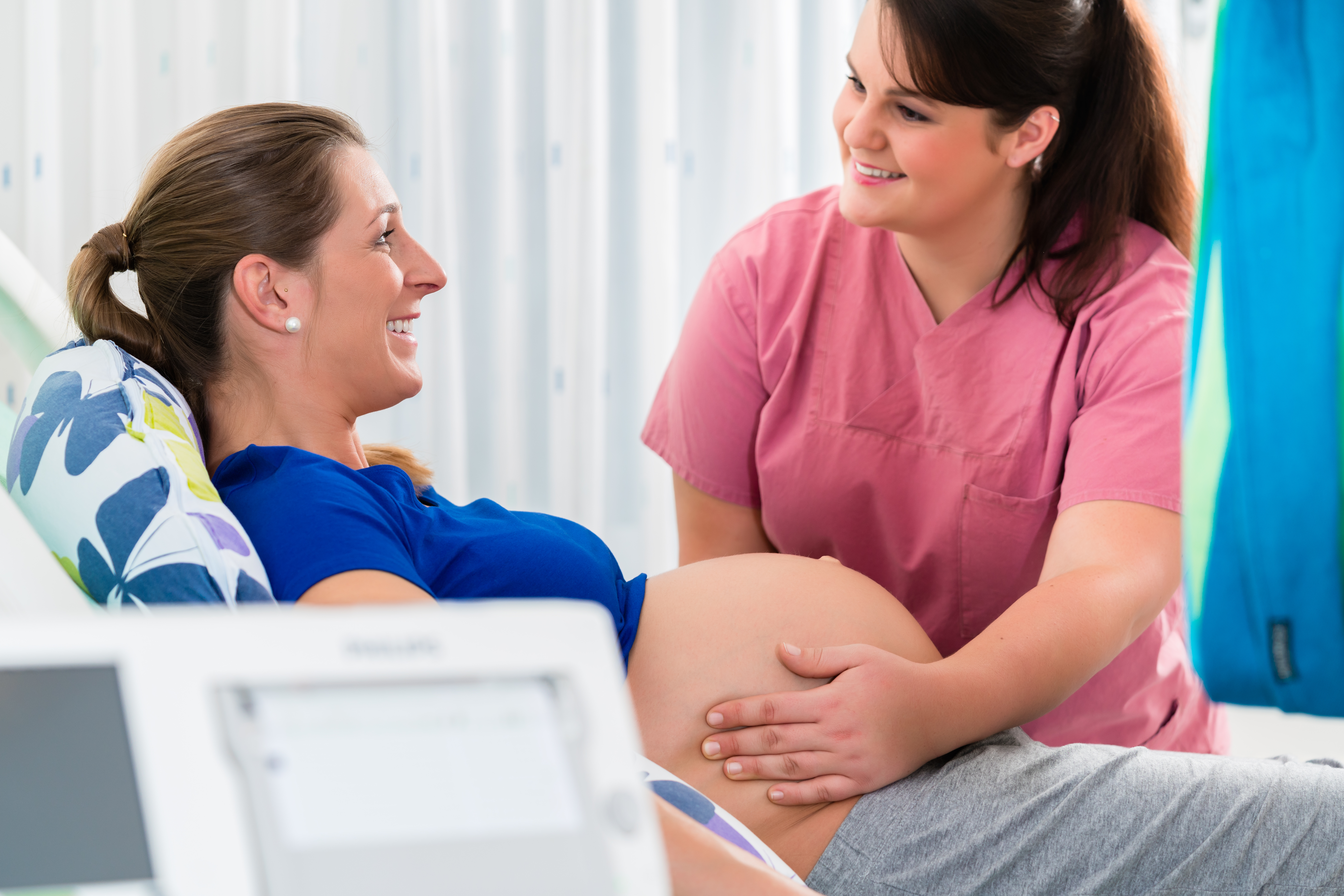Australian-first antenatal vaccine communication model to improve maternal and childhood vaccination rates

An Australian-first antenatal vaccine communication model for midwives showed promise for increasing the uptake of maternal and childhood vaccines, according to a pilot study.
The research, led by the Murdoch Children's Research Institute and published in Vaccine, found the intervention was feasible, and acceptable and improved midwives' vaccine discussions with expectant mothers. The model is the first vaccine communication intervention package developed for Australian midwives in the public antenatal setting.
Murdoch Children's Dr Jessica Kaufman said pregnancy was a critical time for vaccine decision-making, but maternal vaccination rates remained low in Australia with only 30 to 50 per cent of pregnant women covered for influenza and about 80 per cent for whooping cough.
Dr Kaufman said current maternal vaccination promotion in Australia was quite ad hoc, driven by state and local hospital policies. Vaccine information provided to expectant parents was often relatively basic, with limited detail about vaccine safety and effectiveness, she said.
"Vaccination during pregnancy provides two-for-one protection by directly protecting the mother and her baby through transplacental transfer of antibodies to both influenza and whooping cough," she said.
The study tested a multi-component model involving midwives, called 'MumBubVax'. This included using stickers to prompt and record vaccine conversations, an online webinar on effective maternal vaccine communication, a website with maternal and child vaccination resources for midwives and expectant parents, such as fact sheets on vaccine benefits and vaccine-preventable disease severity, along with SMS vaccine reminders for pregnant women.
The study involved 25 midwives and 62 pregnant women recruited at The Royal Women's Hospital (RWH).
Midwives reported the training made their vaccine conversations easier and they felt more confident in addressing parental concerns. Of the pregnant women enrolled in the study, 86 per cent reported discussing influenza and 82 per cent whooping cough vaccination with their midwives.
Self-reported maternal vaccine uptake in the group was 82 per cent and 93 per cent for influenza and whooping cough respectively, and 96 per cent of infants in the study received all three National Immunisation Program vaccines due at two months.
This compares to vaccine rates of 43 per cent for maternal influenza and 60 per cent for maternal whooping cough by women who had their babies delivered at the Royal Women's Hospital in 2017-18.
"We know that midwives face intense pressure to cover a broad range of issues in their limited appointment times, so our aim was to try and make their conversations as efficient and effective as possible," Dr Kaufman said.
"The MumBubVax website we created saves discussion time while providing additional detailed information for those parents who are seeking this, including links to high-quality childhood vaccine information on the Sharing Knowledge About Immunisation website."
The MumBubVax intervention was developed by Murdoch Children's researchers and colleagues in Australia and the US after their previous research showed that many midwives received little or no vaccination communication training, despite their status as the most trusted information source of vaccine information in the Australian public antenatal system.
Associate Professor Margie Danchin said vaccination coverage was more likely to increase with interventions that addressed multiple barriers and different levels of healthcare decision-making.
"Increasing and sustaining high maternal vaccine coverage rates is critical, especially as new maternal vaccines for respiratory syncytial virus and group B strep are introduced in coming years," she said.
"With up to four vaccines eventually being available in pregnancy, these decisions and discussions will become even more complex and challenging. We need a strong platform to ensure these discussions occur at set times in pregnancy and are not too time-consuming."
Associate Professor Danchin said she hoped the communication package would become routine in all public antenatal settings and researchers were looking to adapt it for GPs.
Researchers from the University of Melbourne, University of Western Australia, Telethon Kids Institute, Yale University, University of Sydney, Texas A&M University, University of Adelaide, Women's and Children's Health Network in North Adelaide, Perth Children's Hospital, Curtin University, Menzies School of Health Research, Charles Darwin University, The Royal Children's Hospital, University of Sydney School of Public Health and Monash University also contributed to the findings.
Publication: Jessica Kaufman, Katie Attwell, Jane Tuckerman, Jacinta O'Sullivan, Saad B. Omer, Julie Leask, Annette Regan, Helen Marshall, Katherine J. Lee, Tom Snelling, Kirsten Perrett, Kerrie Wiley, Michelle L. Giles and Margie Danchin. 'Feasibility and acceptability of the multi-component P3-MumBubVax antenatal intervention to promote maternal and childhood vaccination: A pilot study," Vaccine, 38(24):4024-4031. DOI: 10.1016/j.vaccine.2020.04.010
Available for interview:
Dr Jessica Kaufman
Associate Professor Margie Danchin
Media Contact:
Bridie Byrne
Murdoch Children's Communications Specialist
Phone: +613 9936 6211/ 0403 664 416
Email:
show email address
About Murdoch Children's Research Institute
The Murdoch Children's Research Institute is the largest child health research institute in Australia committed to making discoveries and developing treatments to improve child and adolescent health in Australia and around the world. They are pioneering new treatments, trialling better vaccines and improving ways of diagnosing and helping sick babies, children and adolescents. It is one of the only research institutes in Australia to offer genetic testing to find answers for families of children with previously undiagnosed conditions.
Funding
The study was supported by the Communicable Disease Control Directorate, Department of Health, Western Australia Government [grant number DOH2017 1330], Murdoch Children's Research Institute Theme funding and the Victorian Government's OIS Program. MD is funded by the University of Melbourne Bickart Clinician Research Fellowship. HM is funded by the NHMRC (APP1084951). KP is funded by a Melbourne Children's Clinician-scientist Fellowship. TS is supported by a Career Development Fellowship from the National Health and Medical Research Council (GNT1111657).



